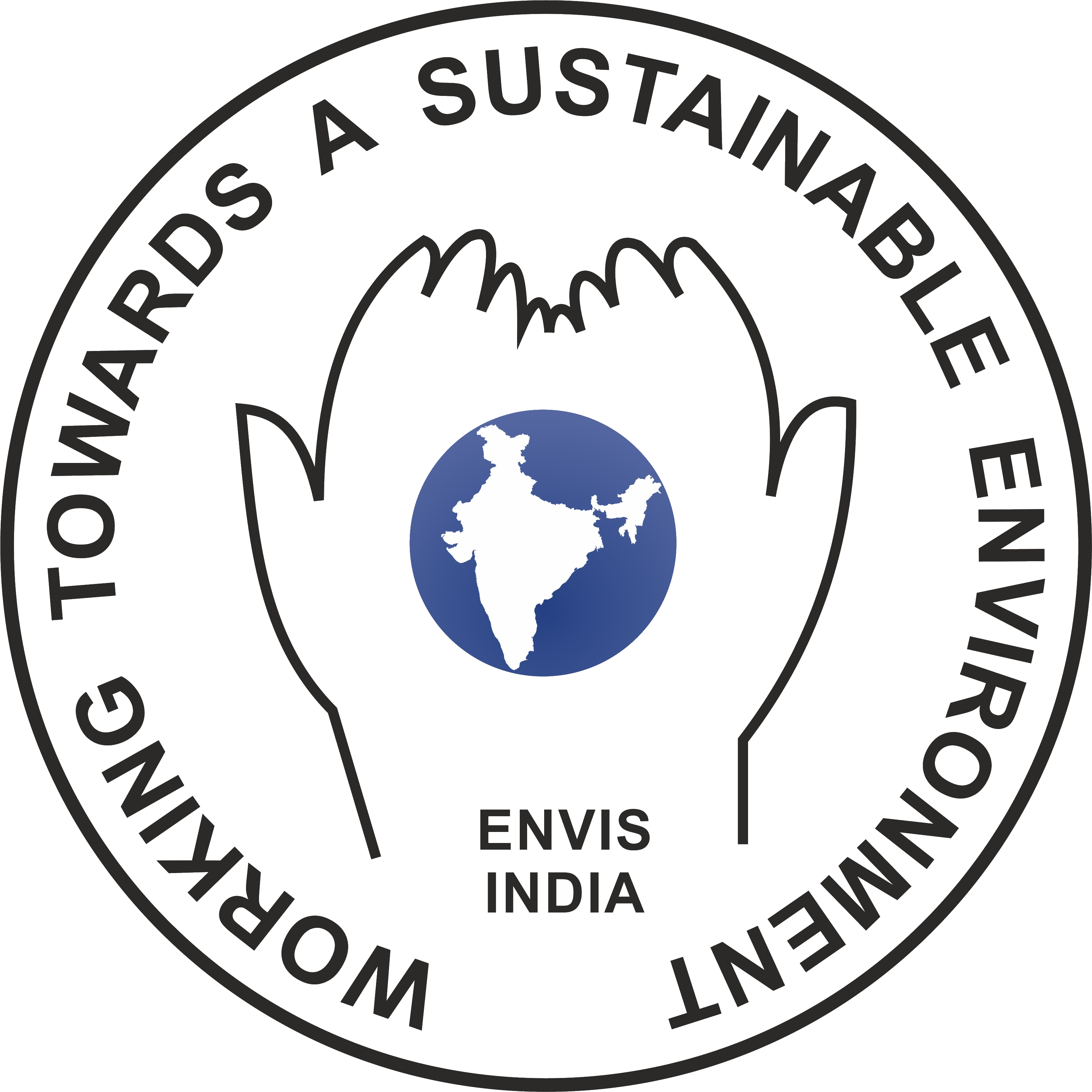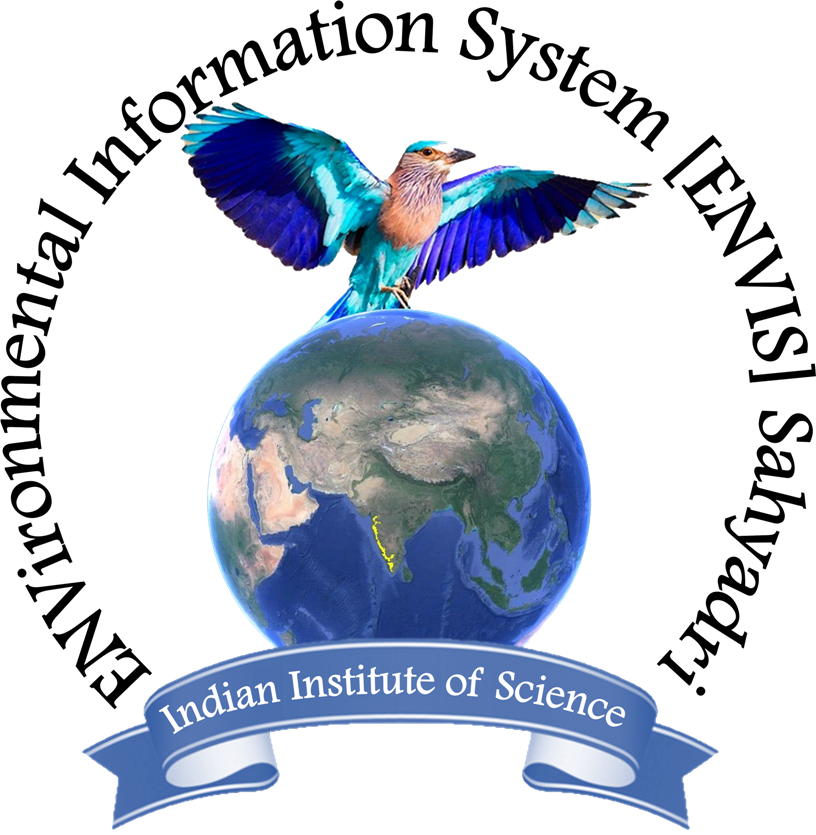
|

|
Sahyadri E-News : Issue LXXVIII (78)
Ecosystem Restoration for Water & Food Security |

|

|
| Home | Introduction | Articles | Announcement | Books | News | Posters | Reports | Experts | E-Links | Bibliography | Forum | Webinars | Editors |
Bibliography
1. Bodin, B., Garavaglia, V., Pingault, N., Ding, H., Wilson, S., Meybeck, A., Gitz, V., d'Andrea, S. and Besacier, C., 2022. A standard framework for assessing the costs and benefits of restoration: Introducing The Economics of Ecosystem Restoration.Restoration Ecology,30(3), p.e13515.
2. Chen, W., Wallhead, P., Hynes, S., Groeneveld, R., O'Connor, E., Gambi, C., Danovaro, R., Tinch, R., Papadopoulou, N. and Smith, C., 2022. Ecosystem service benefits and costs of deep-sea ecosystem restoration.Journal of environmental management,303, p.114127.
3. Hariyadi, A.R.S., Puroso, P., Ismail, T. and Mirza, E., 2022. Community Contribution to Ecosystem Restoration in Giri Mulyo Village as a Role Model of Kerinci Seblat National Park, Jambi-Sumatra, Indonesia. InIOP Conference Series: Earth and Environmental Science(Vol. 950, No. 1, p. 012068). IOP Publishing.
4. Mao, W., Zhao, Y., He, B., Jia, B. and Li, W., 2022. Review on degradation mechanism and restoration strategies of seagrass ecosystem.Journal of Desert Research,42(1), p.87.
5. Mohan, M., Chacko, A., Rameshan, M., Gopikrishna, V.G., Kannan, V.M., Vishnu, N.G., Sasi, S.A. and Baiju, K.R., 2022. Restoring Riparian Ecosystems During the UN-Decade on Ecosystem Restoration: A Global Perspective.Anthropocene Science, pp.1-20.
6. Yang, Q., Liu, G., Casazza, M., Dumontet, S. and Yang, Z., 2022. Ecosystem restoration programs challenges under climate and land use change.Science of The Total Environment,807, p.150527.
7. Bawa, K.S., Sengupta, A., Chavan, V., Chellam, R., Ganesan, R., Krishnaswamy, J., Mathur, V.B., Nawn, N., Olsson, S.B., Pandit, N. and Quader, S., 2021. Securing biodiversity, securing our future: A national mission on biodiversity and human well-being for India.Biological Conservation,253, p.108867.
8. Bharath, S. and Ramachandra, T.V., 2021. Modeling Landscape Dynamics of Policy Interventions in Karnataka State, India.Journal of Geovisualization and Spatial Analysis,5(2), pp.1-23.
9. Dubey, P.K., Singh, A., Raghubanshi, A. and Abhilash, P.C., 2021. Steering the restoration of degraded agroecosystems during the United Nations Decade on Ecosystem Restoration.Journal of Environmental Management,280, p.111798.
10. Fischer, J., Riechers, M., Loos, J., Martin-Lopez, B. and Temperton, V.M., 2021. Making the UN decade on ecosystem restoration a social-ecological endeavour.Trends in Ecology & Evolution,36(1), pp.20-28.
11. Ramachandra, T.V., Bharath, S. and Vinay, S., 2021. Assessment of Forest Transitions and Regions of Conservation Importance in Udupi district, Karnataka.Indian Forester,147(9), pp.834-847.
12. Ramachandra, T.V. and Bharath, S., 2021. Carbon Footprint of Karnataka: Accounting of Sources and Sinks. InCarbon Footprint Case Studies(pp. 53-92). Springer, Singapore.
13. Sinclair, M., Sagar, M.V., Knudsen, C., Sabu, J. and Ghermandi, A., 2021. Economic appraisal of ecosystem services and restoration scenarios in a tropical coastal Ramsar wetland in India.Ecosystem Services,47, p.101236.
14. Singh, K., Singh, R.P. and Tewari, S.K., 2021. Ecosystem restoration: Challenges and opportunities for India.Restoration Ecology,29(3), p.e13341.
15. Singh, R., Shelar, K., Duraisami, M., Anderson, W. and Gautam, R.S., 2021. Equitable and inclusive landscape restoration planning: learning from a restoration opportunity assessment in India.Ecological Restoration,39(1-2), pp.108-119.
16. Wells, H.B., Kirobi, E.H., Chen, C.L., Winowiecki, L.A., Vagen, T.G., Ahmad, M.N., Stringer, L.C. and Dougill, A.J., 2021. Equity in ecosystem restoration.Restoration Ecology,29(5), p.e13385.
17. Yao, Y., Fu, B., Liu, Y., Wang, Y. and Song, S., 2021. The contribution of ecosystem restoration to sustainable development goals in Asian drylands: A literature review.Land Degradation & Development,32(16), pp.4472-4483.
18. Aronson, J., Goodwin, N., Orlando, L., Eisenberg, C. and Cross, A.T., 2020. A world of possibilities: six restoration strategies to support the United Nation's Decade on Ecosystem Restoration.Restoration Ecology,28(4), pp.730-736.
19. Everard, M., 2020. Managing socio-ecological systems: who, what and how much? The case of the Banas river, Rajasthan, India.Current Opinion in Environmental Sustainability,44, pp.16-25.
20. Kothandaraman, S., Dar, J.A., Sundarapandian, S., Dayanandan, S. and Khan, M.L., 2020. Ecosystem-level carbon storage and its links to diversity, structural and environmental drivers in tropical forests of Western Ghats, India.Scientific reports,10(1), pp.1-15.
21. Kumari, R., Shukla, S.K., Parmar, K., Bordoloi, N., Kumar, A. and Saikia, P., 2020. Wetlands conservation and restoration for ecosystem services and halt biodiversity loss: An Indian perspective. InRestoration of wetland ecosystem: A Trajectory towards a sustainable environment(pp. 75-85). Springer, Singapore.
22. Ramachandra, T.V., Bharath, S. and Bharath, A.H., 2020. Insights of Forest Dynamics for the Regional Ecological Fragility Assessment.Journal of the Indian Society of Remote Sensing,48(8), pp.1169-1189.
23. Ramachandra, T.V., Vinay, S., Bharath, S., Chandran, M.D.S., and Aithal, B.H., 2020. Insights into riverscape dynamics with the hydrological, ecological, and social dimensions for water sustenance.Curr Sci,118(9), pp.1379-1393.
24. Strassburg, B.B., Iribarrem, A., Beyer, H.L., Cordeiro, C.L., Crouzeilles, R., Jakovac, C.C., Braga Junqueira, A., Lacerda, E., Latawiec, A.E., Balmford, A. and Brooks, T.M., 2020. Global priority areas for ecosystem restoration.Nature,586(7831), pp.724-729.
25. Ramachandra, T.V., Bharath, S. and Vinay, S., 2019. Visualisation of impacts due to the proposed developmental projects in the ecologically fragile regions-Kodagu district, Karnataka.Progress in Disaster Science,3, p.100038.
26. Ramachandra, T.V. and Bharath, S., 2019. Sustainable management of Bannerghatta National Park, India, with the insights in land cover dynamics.FIIB Business Review,8(2), pp.118-131.
27. Ramachandra, T.V. and Bharath, S., 2019. Global warming mitigation through carbon sequestrations in the Central Western Ghats.Remote Sensing in Earth Systems Sciences,2(1), pp.39-63.
28. Brahma, B., Pathak, K., Lal, R., Kurmi, B., Das, M., Nath, P.C., Nath, A.J. and Das, A.K., 2018. Ecosystem carbon sequestration through restoration of degraded lands in Northeast India.Land Degradation & Development,29(1), pp.15-25.
29. Ramachandra, T.V., Bharath, S. and Gupta, N., 2018. Modelling landscape dynamics with LST in protected areas of Western Ghats, Karnataka.Journal of environmental management,206, pp.1253-1262.
30. Ramachandra, T.V., Bharath, S., Chandran, M.S. and Joshi, N.V., 2018. Salient Ecological Sensitive Regions of Central Western Ghats, India.Earth Systems and Environment,2(1), pp.15-34.
31. Ramachandra, T.V., Vinay, S., Bharath, S. and Shashishankar, A., 2018. Focus: Ecology and Evolution: Eco-Hydrological Footprint of a River Basin in Western Ghats.The Yale journal of biology and medicine,91(4), p.431.
32. Ramachandra, T.V., Bharath, S., Vinay, S., Tara, N.M., Subashchandran, M.D. and Joshi, N.V., 2018. Conservation and Sustainable Management of Local Hotspots of Biodiversity. InGeospatial Infrastructure, Applications and Technologies: India Case Studies(pp. 365-383). Springer, Singapore.
33. Ramachandra, T.V. and Bharath, S., 2018. Geoinformatics based Valuation of Forest Landscape Dynamics in Central Western Ghats, India.J Remote Sensing & GIS,7(227), p.2.
34. Ramachandra, T.V., Bharath, S. and Vinay S., 2018.Geoinformatics based Valuation of Forest Landscape Dynamics in Central Western Ghats, India, Journal of Biodiversity, 9(1-2), pp.25-42.
35. Ramachandra, T.V., Bharath, S., Rajan, K.S. and Chandran, M.D.S., 2017. Modelling the forest transition in Central Western Ghats, India. Spatial Information Research, 25(1), pp.117-130.
36. Vinay, S., Vishnu, D.M., Shrikanth, N., Chandran, M.D.S., Bharath, S., Shashishankar, A. and Ramachandra, T.V., 2017. Landscapes and hydrological regime linkages: case study of Chandihole, Aghanashini.National Seminar for Research Scholars. Bangalore, India.
37. Bharath, S., Ramachandra, T.V., 2016. Visualization of landscape dynamics in protected areas. In proceedings of 10th Biennial Lake Conference-2016, 28-31 December.
38. Ramachandra, T.V., Bharath, S., Rajan, K.S. and Chandran, M.S., 2016. Stimulus of developmental projects to landscape dynamics in Uttara Kannada, Central Western Ghats. The Egyptian Journal of Remote Sensing and Space Science, 19(2), pp.175-193.
39. Ramachandra, T.V., Bharath, S. and Chandran, S., 2016. Geospatial analysis of forest fragmentation in Uttara Kannada District, India. Forest Ecosystems, 3(1), pp.1-15.
40. Ramachandra, T.V., Vinay, S., Bharath, H.A., Bharath, S., Shashishankar, A., 2016. Landscape Status and Hydrological Regime of Aghanashini River Basin. Proceedings of SWWEM - 2016 - International Conference and Exibition on Best Practices in Sustainable Water, Waste Water and Energy Management, At Bangalore, Volume: 1.
41. Bharath, S., Rajan, K.S. and Ramachandra, T.V., 2016. Geo-visualisation of landscape dynamics in Sirsi and Haliyal forest divisions of Central Western Ghats. Proceedings of National Conference on Challenges of Civil Engineering Innovations (NCCCEI 2016), At Bangalore from 4-5 May; Sri Venkateshwara College of Engineering NH 7, Vidyanagar, Bengaluru International Airport Road, Bangalore, India.
42. Bharath, S., Rajan, K.S. and Ramachandra, T.V., 2014. Status and Future Transition of Rapid Urbanizing Landscape in Central Western Ghats-CA Based Approach.ISPRS Annals of Photogrammetry, Remote Sensing & Spatial Information Sciences,2(8).
43. Ramachandra, T.V., Bharath, S. and Bharath, A., 2014. Spatio-temporal dynamics along the terrain gradient of diverse landscape. Journal of Environmental Engineering and Landscape Management, 22(1), pp.50-63.
44. Ramachandra, T.V., Chandran, M.D.S., Bharath, S., Rao, G.R. and Vishnu D.M., 2014. Reclamation of Mine Regions at Bisgod: Approaches and Challenges, SahyadriConservation Series 43, ENVIS Technical Report 80, CES, Indian Institute of Science, Bangalore 560012, India
45. Ramachandra, T.V., Asulabha, K.S., Bharath, H.A., Bharath, S., Durga, M.M., Gouri K., Harish, R.B., Sincy, V., Sudarshan, P.B., Vinay, S. 2014. Environment Monitoring in the Neighbourhood, ENVIS Technical Report 77, Environmental Information System, CES, Indian Institute of Science, Bangalore 560012.
46. De Groot, R.S., Blignaut, J., Van Der Ploeg, S., Aronson, J., Elmqvist, T. and Farley, J., 2013. Benefits of investing in ecosystem restoration.Conservation Biology,27(6), pp.1286-1293.
47. Vinay, S., Bharath, S., Bharath, H.A., Ramachandra T.V., 2013. Hydrologic Model with Landscape Dynamics for Drought Monitoring, In proceeding of: Joint International Workshop of ISPRS WG VIII/1 and WG IV/4 on Geospatial Data for Disaster and Risk Reduction, Hyderabad, November 21-22.
48. Ramachandra, T.V., Subash Chandran, M.D., Joshi, N.V., Pallav, J., Uttam, K., Aithal, B.H., Prakash, M., Rao, G.R. and Vishnu, M., 2012.Landslide susceptible zone mapping in Uttara Kannada Central Western Ghats. ENVIS Technical Report 28. Energy & Wetlands Research Group, Centre for Ecological Sciences, Indian Institute of Science, Bangalore, 560012.
49. Ramachandra, T.V., Krishnadas G., Bharath, S. and Kumar, U., 2012. Regional bioenergy planning for sustainability in Himachal Pradesh, India. Journal of Energy, Environment & Carbon Credits, 2(1), 13-49.
50. Ramachandra, T.V., Kumar, U., Aithal, B.H., Diwakar, P.G. and Joshi, N.V., 2010, January. Landslide susceptible locations in western ghats: prediction through openmodeller. InProceedings of the 26th Annual In-House Symposium on Space Science and Technology, ISRO-IISc Space Technology Cell, Indian Institute of Science, Bangalore(pp. 65-74).
 Sahyadri ENews Issues: I - LXXVIII
Sahyadri ENews Issues: I - LXXVIII